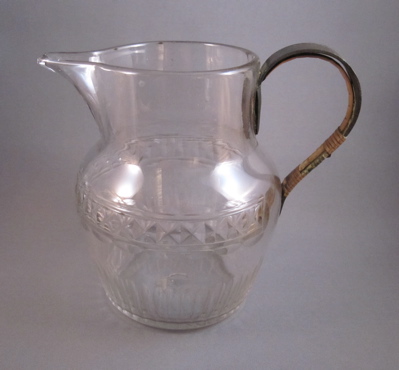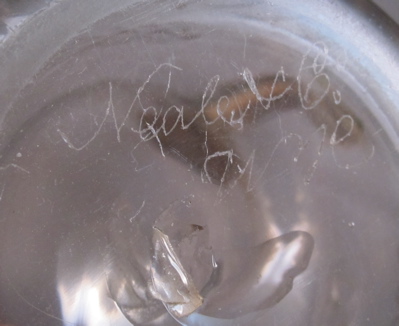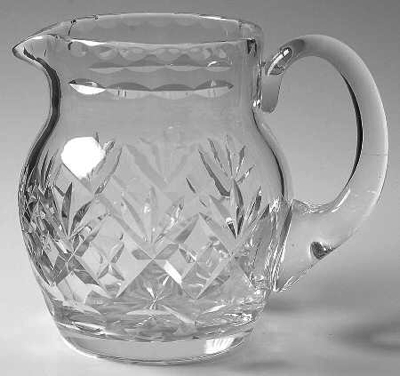I had never seen an early metal replacement handle found on a piece of glassware, until now. This blown glass baluster form jug with cut decoration stands 5-3/4″ tall and was made in England in the late 18th to early 19th century. Etched on the underside is a cursive signature, Neale & Co. WH, above an unpolished pontil scar. James Neale, a London merchant who opened the Church Works in North Staffordshire in the second half of the 18th century, was famous for producing earthenware in the style of neighbor Josiah Wedgwood’s ubiquitous pottery. Neale’s wares were of the same fine quality and though rivals, he helped Wedgwood, when in a pinch, with large orders that needed to be filled. Though known mostly for producing ceramic tableware and figures, Neale & Co. also housed glassware merchants at the Church Works, which explains why this unusual mark is found on my glass jug.
As I usually come across either handles still covered in rattan or exposed bare metal handles with all covering long gone, I was pleased to find this hybrid. It reveals a half-round crimped support strip of rattan along the interior of the handle, and also shows the remains of a decoratively woven outer cover. Pieces such as this seemingly inconsequential imperfect repair help collectors and scholars discover the early methods of repair and insulation. So thanks to those who owned this wonderful jug before me, keeping the remains of this most inventive repair intact!
This crystal jug shows what the original applied handle might have looked like on my jug.
Photo courtesy of Replacements
Tags: English, glass, metal handle, rattan






What an interesting story for this one. As usual, the posting is much appreciated!
Another seeming impossible made possible.